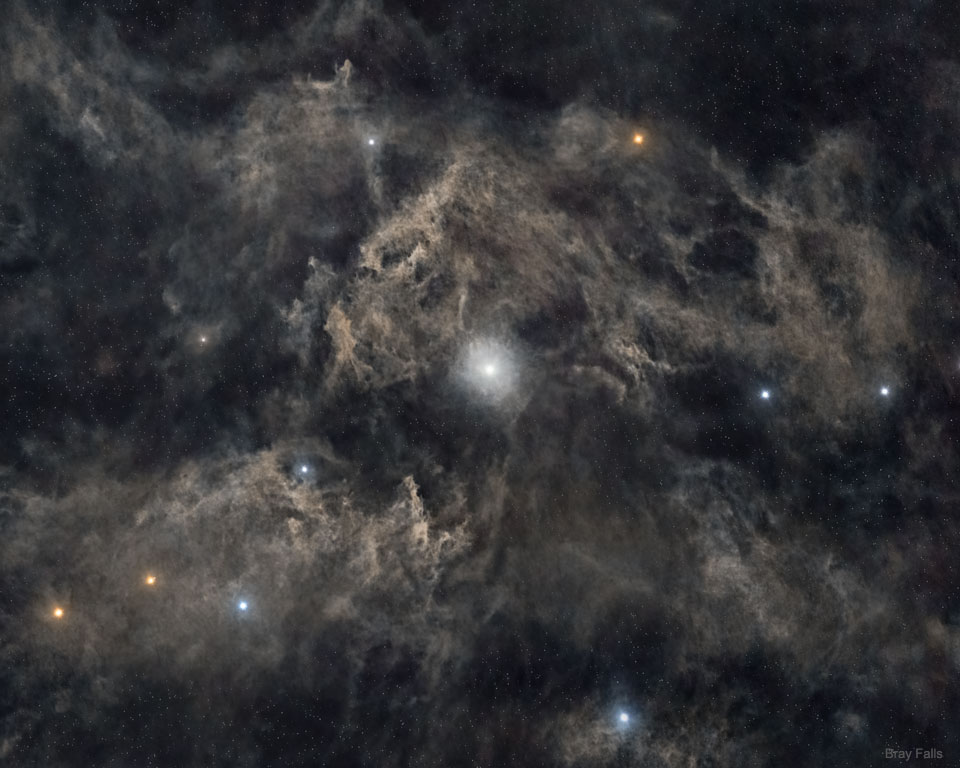2021年04月28日
North Star: Polaris and Surrounding Dust
Image Credit & Copyright: Bray Falls
Explanation: Why is Polaris called the North Star? First, Polaris is the nearest bright star toward the north spin axis of the Earth. Therefore, as the Earth turns, stars appear to revolve around Polaris, but Polaris itself always stays in the same northerly direction — making it the North Star. Since no bright star is near the south spin axis of the Earth, there is currently no South Star. Thousands of years ago, Earth’s spin axis pointed in a slightly different direction so that Vega was the North Star. Although Polaris is not the brightest star on the sky, it is easily located because it is nearly aligned with two stars in the cup of the Big Dipper. Polaris is near the center of the eight-degree wide featured image, an image that has been digitally manipulated to suppress surrounding dim stars but accentuate the faint gas and dust of the Intergalactic Flux Nebula (IFN). The surface of Cepheid Polaris slowly pulsates, causing the star to change its brightness by a few percent over the course of a few days.
Portal Universe: Random APOD Generator
Tomorrow’s picture: The Crescent Earth
北极星与它周围的尘埃
影像提供与版权: Bray Falls
说明: 为何北极星是指北星?首先,目前北极星是北天离地球自转轴最近的亮星。因此,当地球自转时,北天的恒星看似都在旋绕北极星,只有北极星恒定不动,故为指北星。不过,在南天的地球自转轴指向附近,目前没有亮星,故无南极星。在数千年前,地球转轴的指向和现在不同,在那时,织女星是指北星。虽然北极星并不是夜空中最亮的恒星,但要找到它并不难,因为它和北斗七星 斗瓢的两颗星几乎连成一直线。在上面这幅经过数位处理,以抑制周围暗星但突显名为共照耀星系际星云(IFN)的8度宽主题影像里,北极星是中心附近最亮的那颗星。身为造父变星有胀缩表面的北极星,在为期数天的缓慢变化过程中,它的亮度会有几个百分点的变化。
宇宙入口:随机天文·每日一图(APOD)生成器
明日的图片: The Crescent Earth







